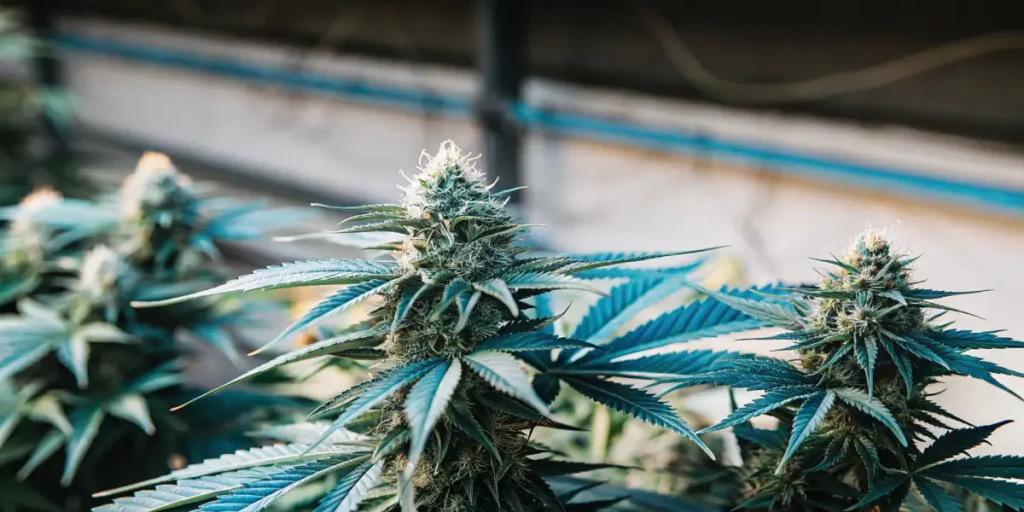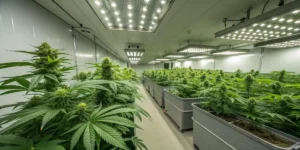Growing Lemon Haze Auto, a popular autoflowering cannabis strain known for its citrus aroma and resin-coated buds, is a rewarding endeavor for both novice and experienced cultivators. Starting with high-quality seeds is crucial, so ensure you purchase from a reputable supplier. This strain thrives in a variety of growing conditions, making it ideal for indoor as well as outdoor growth. Being an autoflowering variety, Lemon Haze Auto has a shorter life cycle, typically completing its growth in around 8 to 10 weeks from seed to harvest.
The first step in growing Lemon Haze Auto is germinating the seeds. Many growers prefer the paper towel method, which involves placing the seeds between damp paper towels until they sprout. Alternatively, you can plant them directly in the final growing medium to avoid transplant shock. Speaking of soil, ensure your medium is light and well-aerated; a soil mix with up to 30% perlite is often recommended to facilitate drainage and oxygenation.
Once your seedlings have sprouted, they should receive plenty of light. If you’re growing indoors, LED or HPS lights should be positioned appropriately to mimic natural sunlight, ideally providing 18 to 24 hours of light daily throughout the growth cycle. Outdoors, these plants should be positioned to receive maximum direct sunlight, which enhances bud production and potency. Regular light and a consistent schedule will ensure your plants grow vigorously.
Throughout the growth cycle, careful attention must be paid to nutrients and watering. Autoflowering plants are generally more sensitive to nutrients than photoperiod strains. Start with a milder nutrient solution and gradually increase the concentration as the plants mature. Over-watering is a common mistake, so always let the top inch of soil dry out between waterings to prevent root rot.
As your plants transition from the vegetative to the flowering stage, you’ll notice the formation of dense, sticky buds. It’s critical to maintain appropriate humidity levels—50% during vegetative growth and lowering to around 40% during flowering—to prevent mold and mildew. Additionally, providing good air circulation through fans can help maintain these levels and strengthen plant structure by simulating natural breezes.
Monitoring the trichomes is essential to determine the optimal harvest time. As the plants near the end of their growth cycle, the trichomes will change from clear to milky white and, finally, to an amber hue. Most growers prefer to harvest when the trichomes are mostly milky to preserve the strain’s characteristic uplifting effects. A meticulous harvest at this stage ensures the best taste and potency.
Growing Lemon Haze Auto requires attention to detail but, with the right environment and care, this strain can yield impressive, flavorful results. Its comparatively short growth cycle and ability to adapt to various conditions make it a favorite among growers seeking a balance of quality and convenience.
Lemon haze auto Strain Overview: Traits, Effects & Genetics
Lemon Haze Auto is a much-celebrated cannabis strain renowned for its potent aroma, vibrant flavors, and well-balanced effects. As an auto-flowering variety, it is an excellent choice for both novice and experienced growers, offering a fast-growing cycle with no need for complex light management. The strain inherits its unique characteristics from its parent strains, Lemon Skunk and Super Silver Haze, resulting in a plant that stands out for its distinct citrus profile and robust growth dynamics. Cultivators appreciate its resilience, making it suitable for various growing environments.
One of the most striking traits of this strain is its aromatic bouquet. The dominant lemon fragrance comes through strongly, underscored by subtle undertones of earthy spices and sweet skunk. These olfactory qualities translate beautifully into its flavor profile, which provides a crisp and refreshing citrus taste on the inhale and a slightly sweet, earthy aftertaste on the exhale. The visual appeal should not be overlooked; its bright green colas are adorned with amber pistils and a generous coating of trichomes, making it as pleasing to the eye as it is to the palate.
The effects are primarily uplifting and energizing, making it an excellent daytime option for those looking for a creative boost or a mood enhancer. Upon consumption, users generally experience an immediate cerebral high that induces happiness and inspiration, often leading to enhanced social interactions and creative pursuits. Its balanced sativa and indica properties ensure a calming wave follows the initial euphoria, providing gentle relaxation without the risk of a heavy sedative state, making it suitable for regular use without the worry of couch-lock.
Genetically, this variety is a blend primarily derived from its parent strains, which gives it a sativa dominance with a touch of indica influence. The addition of ruderalis genetics enables the auto-flowering trait, allowing the plant to effortlessly transition from the vegetative phase to flowering without strict light schedules. This genetic mix ensures a resilient and adaptable strain that grows well in various conditions, whether indoors or outdoors. Typically, plants reach a medium height, making them manageable in size, yet they produce a bountiful yield of high-quality buds within about 8–10 weeks post-germination.
Optimal Environment to Grow Lemon Haze Auto Successfully
Growing Lemon Haze Auto successfully requires an understanding of its unique environmental needs, given its autoflowering nature. This strain typically thrives in controlled climates that mimic its native conditions. Indoors, maintaining a temperature range between 70-85°F (21-29°C) is ideal as it helps in maximizing growth and bud production. The strain appreciates a stable environment, so it’s critical to avoid drastic temperature fluctuations, particularly during the night when the temperature can naturally drop. Use heaters or air conditioning units if necessary to maintain this consistency.
Humidity is another important factor for Lemon Haze Auto’s growth. During the vegetative stage, a relative humidity (RH) of around 60% is beneficial as it helps in preventing dehydration. However, as the plant approaches the flowering stage, it’s essential to gradually reduce the humidity to about 40-50%. This reduction helps prevent mold and mildew development, which can severely affect the yield quality and quantity. Growers might want to use a hygrometer for accurate RH readings and a dehumidifier to maintain optimal conditions.
Lighting is crucial for autoflowering strains. These plants can thrive under a light cycle of 18 to 24 hours per day due to their genetics. LED grow lights are recommended to provide the necessary spectrum without producing excessive heat, which might disrupt internal conditions. Adequate lighting ensures that plants receive energy efficiently for robust growth and superior bud development.
Furthermore, it’s vital to ensure that the soil or growing medium is well-aerated and nutrient-rich. This strain prefers slightly acidic to neutral pH levels, ideally between 6.0 and 6.5. Using quality potting mix or a hydroponic setup can help achieve this. Regular monitoring and balanced nutrients are important, particularly because overfeeding can lead to nutrient burn, which is detrimental to development.
Finally, airflow and ventilation are key components of an optimal growth environment. Proper air circulation prevents pests and diseases and helps maintain ideal temperature and humidity levels. This can be achieved by installing fans to facilitate air movement and ensuring plants neither face stagnant air nor harsh drafts. By adhering to these environmental guidelines, growers can optimize overall plant health and yield.
Grow Room Setup for Lemon Haze Auto Plants
Setting up a grow room for Lemon Haze Auto plants requires thoughtful consideration of several key elements to ensure optimal growth and yield. As an autoflowering strain, Lemon Haze Auto is known for its straightforward cultivation process, making it suitable for beginners and veteran growers alike. When configuring your grow room, it’s important to maintain a balance of light, temperature, humidity, and airflow to mimic the ideal environment for these plants to thrive.
Adequate lighting is crucial for the healthy growth of Lemon Haze Auto plants. Since they have a relatively short growing cycle, typically between 8 to 10 weeks from germination to harvest, it’s beneficial to provide them with a consistent light schedule. A 20 hours on and 4 hours off light cycle works well, utilizing full-spectrum LED lights to simulate natural sunlight. This will help maximize photosynthesis and promote vigorous vegetative and flowering stages.
Temperature and humidity control are also important factors in setting up your grow room. This strain thrives in temperatures ranging from 70 to 80°F (21 to 27°C) during the light period, with slightly cooler temperatures during the dark period. Maintaining a relative humidity level between 40% and 60% helps prevent mold and mildew while promoting healthy plant transpiration. To achieve this, consider using oscillating fans for airflow and a dehumidifier if necessary.
Additionally, the grow medium and pot size play a vital role in the cultivation process. Autoflowering strains benefit from well-aerated soils to promote root development. A pot size of 3 to 5 gallons is ideal to provide enough space for root growth without overwhelming the energy use of the plant. Implementing a pH level between 6.0 and 6.5 in your soil or hydroponic system will further enhance nutrient uptake.
Finally, don’t overlook the importance of CO2 levels in your grow room. While these plants are not particularly CO2 dependent, enhancing their activity can boost overall growth. Passive CO2 diffusers or even the occasional airflow from the outside can be sufficient for a small grow setup. By carefully managing these aspects of your grow room, you can expect to cultivate healthy plants with aromatic buds bursting with citrusy flavors and uplifting effects.
Indoor Growing Tips for Lemon Haze Auto
Growing Lemon Haze Auto indoors can be a rewarding endeavor, offering the advantage of a controlled environment and protection from outdoor variables. To start, it is important to choose an adequate grow space. A grow tent is ideal due to its ability to maintain stable temperature and humidity levels. Make sure the tent is well-ventilated and equipped with fans to ensure air circulation, which prevents mold and strengthens plant stems.
Lighting is crucial for optimizing the growth of Lemon Haze Auto. As an autoflowering variety, it thrives under a consistent light schedule. Position LED lights approximately 18-24 inches above the plants and aim for an 18-hour light and 6-hour dark cycle. LEDs are preferred due to their energy efficiency and lower heat output, reducing the risk of scorching the plants. Monitor the light intensity and adjust the height as plants grow to provide optimal light exposure.
Soil quality and nutrient balance are vital when cultivating Lemon Haze Auto indoors. Choose a well-draining soil mix rich in organic matter. Autoflowering strains typically require less nutrients than photoperiod strains, so use a balanced fertilizer in moderation. Implement a feeding schedule that favors low nitrogen levels during the flowering stage to enhance bud development and flavor intensity.
Watering practices play an important role in the health of Lemon Haze Auto plants. Overwatering can lead to root rot, while underwatering can stunt growth. Check the soil moisture regularly and water only when the top inch feels dry. Adjust watering frequency based on the plant’s growth stage and environmental conditions, ensuring that the pots have adequate drainage to prevent waterlogging.
Finally, maintain a close watch on the temperature and humidity levels in your grow space. Lemon Haze Auto prefers temperatures between 68-77°F (20-25°C) during the day and slightly cooler at night. Keep humidity around 40-50% during the vegetative stage and lower it to 30-40% during flowering to discourage mold and enhance resin production.
Outdoor Growing Tips for Lemon Haze Auto
Lemon Haze Auto is a robust and flavorful cannabis strain that many outdoor growers find appealing due to its manageable size, citrusy aroma, and quick lifecycle. To optimize its growth outside, it’s crucial to understand the basics of preparing your outdoor garden. First, select a location that provides plenty of direct sunlight for your plants, as cannabis thrives in ample light. Lemon Haze Auto, being an autoflowering strain, is not light-sensitive in the same way as photoperiod plants, but more light still contributes to better yields.
The next important consideration is soil preparation. Lemon Haze Auto prefers well-draining, nutrient-rich soil. Start with a balanced mix of compost, peat, and perlite or vermiculite to ensure good aeration and drainage. You may also consider adding organic nutrients at various growth stages to support the plant’s needs. Since the Lemon Haze Auto has a relatively short growing season, efficient nutrient delivery can enhance both growth and resin production.
Watering practices are another critical aspect of outdoor cultivation. While it is essential to keep your plants hydrated, overwatering can lead to root rot. Monitor the moisture level of the soil consistently and adjust based on weather conditions. During warmer days, your Lemon Haze Auto may require more frequent watering, whereas cooler, cloudy days might reduce water needs. Utilizing mulch can help retain soil moisture and regulate temperature during hotter periods.
Pest management for outdoor-grown Lemon Haze Auto includes regular observation for common cannabis pests such as aphids, spider mites, and caterpillars. Employ organic pesticides and encourage natural predators to maintain a healthy ecosystem. Companion planting with garlic or marigold can serve as a natural deterrent for certain pests, ensuring your plants remain healthy without resorting to chemical interventions.
Finally, timing your planting correctly can influence the success of your Lemon Haze Auto plants. Since this strain is autoflowering, you can plant it early in the season without the risk of frost, and it will flower based on its lifecycle rather than daylight hours. This trait allows for multiple harvests within one growing season, provided the conditions remain conducive for growth.
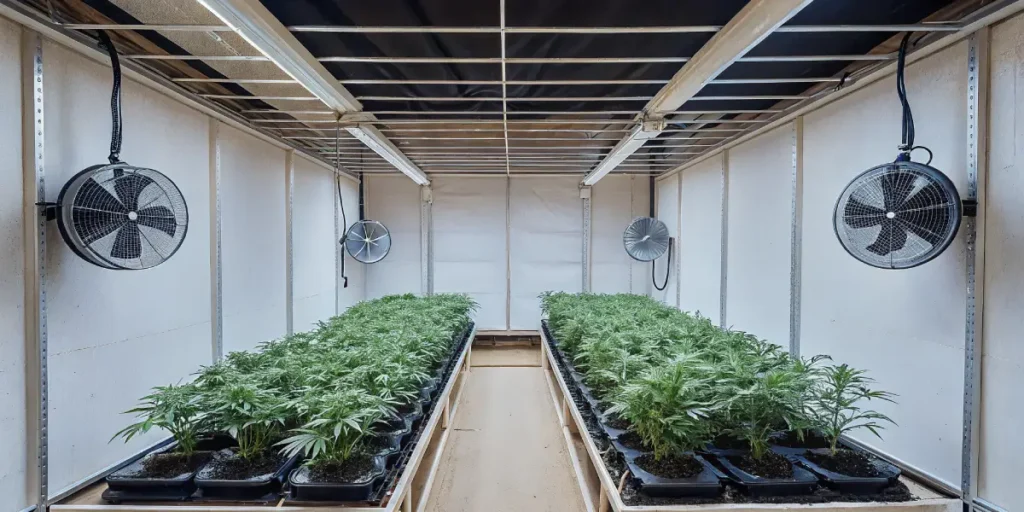
How to Germinate & Propagate Lemon Haze Auto
Germinating Lemon Haze Auto cannabis seeds is the initial and crucial step towards a successful growing experience. To begin, gather high-quality Lemon Haze Auto seeds. Start with the paper towel method, which is widely regarded for its simplicity and effectiveness. Place a few sheets of damp, not soaked, paper towel on a plate, then evenly spread the seeds across the surface. Cover the seeds with another damp paper towel layer and place another plate upside down over the top to create a dome-like environment. Keep this setup in a warm, dark location, ideally between 70-85°F (21-29°C), and check periodically to ensure the paper towels remain moist.
Within 24 to 72 hours, you should notice roots, or ‘taproots,’ emerging from the seeds. Once the taproots reach about 0.5 to 1 inch in length (1.3 to 2.5 cm), they’re ready to be transplanted into their growing medium. Carefully handle the seeds with tweezers to avoid damaging the delicate taproots. Plant them root-side down, approximately 0.5 inches (1.3 cm) into your chosen soil or hydroponic setup. It’s essential to use a light, airy well-draining soil mix to foster robust root development. Ensure your grow environment remains humid and warm, as this promotes healthy growth during the seedling stage.
Propagation of Lemon Haze Auto differs slightly from photoperiod strains due to its autoflowering nature. Autoflowers have a predetermined lifecycle, typically around 8 to 10 weeks. Because of this, cloning isn’t often advised as it can shorten the already limited vegetative stage. Instead, focus on maximizing the life of each seed. Ensure optimal lighting is present as soon as the seedlings emerge—at least 18 hours of light per day is recommended. Employing the right balance of nutrients is crucial; autoflowers are generally more sensitive to overfeeding. Gradually introduce nutrients at lower concentrations, monitoring the plants’ responses carefully to optimize growth.
While Lemon Haze Auto doesn’t rely on the specific light schedule of photoperiods, it does thrive under consistent and adequate light. Consider using full-spectrum LED or HPS lights to mimic natural daylight. Proper air circulation and maintaining a humidity level of 40-60% will support vigorous growth and help prevent mold. Remember to regularly check the pH levels of your water and soil; a range of 6.0-7.0 ensures nutrient uptake efficiency. By maintaining these conditions, your Lemon Haze Auto plants will develop healthily, readying for their transition into the flowering stage.
Overall, the key to successfully germinating and propagating Lemon Haze Auto lies in providing a stable and supportive environment from seed to harvest. This involves careful monitoring and adjustments to ensure each element—temperature, humidity, light, and nutrients—is optimized for the plant’s swift life cycle. With diligent care and attention, growers can expect to cultivate Lemon Haze Auto plants that deliver lush, aromatic buds known for their unique lemon and citrus notes.
Vegetative Stage: Nurturing Your Lemon Haze Auto Plants
The vegetative stage is a crucial period in the growth cycle of your Lemon Haze Auto plants. During this phase, your plants focus on developing a strong root system, robust branches, and ample leaf coverage to optimize photosynthesis. This stage typically lasts between 3 to 4 weeks for autoflowering strains like Lemon Haze Auto, significantly shorter than photoperiod variants. Ensuring that your plants receive adequate light is essential during this time. Consider using a full-spectrum LED grow light to provide the perfect balance of red and blue light wavelengths, helping to promote foliage growth and strengthening the stems.
In addition to light, it’s vital to maintain appropriate environmental conditions to encourage healthy vegetative growth. Keeping the temperature between 70-85°F (21-29°C) and humidity levels around 40-70% creates an ideal environment for lemon haze auto plants. Good air circulation is also essential; using oscillating fans can help strengthen stems and reduce the risk of mold and pests. Regularly check your plants for signs of stress, such as leaf curling or discoloration, as these may indicate environmental imbalances that need addressing.
Nutrition plays a pivotal role in the robust development of your Lemon Haze Auto plants during the vegetative stage. A balanced nutrient mix rich in nitrogen, phosphorus, and potassium is essential to support efficient growth. Nitrogen is crucial during this stage, as it is responsible for the development of lush, green foliage. Be cautious not to overfeed your plants; follow manufacturer guidelines for nutrient dosages and monitor the plant’s response to adjustments. Regularly check the pH of your growing medium and water, ensuring it stays in the optimal range of 6.0-7.0 to prevent nutrient lockout.
Pruning and training techniques can be invaluable in maximizing the vegetative growth of your Lemon Haze Auto plants. Although these plants have a shorter growth period, techniques such as low-stress training (LST) can be utilized to promote an even canopy and improve light penetration. Gently bending the branches to spread them out allows more light to reach lower parts of the plant, potentially increasing yields. Remember to be gentle and avoid cutting or topping your plants, as this can stress autoflowers and hinder their limited growth time.
Overall, the vegetative stage of your Lemon Haze Auto plants requires careful attention to lighting, environmental conditions, nutrition, and training techniques. By optimizing these factors, you ensure that your plants are set up for a successful flowering stage, ultimately leading to a bountiful harvest of high-quality buds.
Flowering lemon haze auto: What to Expect
When growing Lemon Haze Auto, cultivators can anticipate a vibrant and aromatic flowering phase. This strain, known for its sativa-dominant genetics, typically begins to flower around 5 to 6 weeks from germination. Unlike photoperiod strains, which require changes in light cycles to induce flowering, autoflowering varieties like Lemon Haze Auto transition seamlessly without any alterations to lighting schedules. This auto characteristic offers significant advantages, simplifying the cultivation process for both novice and experienced growers.
During the flowering stage, Lemon Haze Auto is renowned for its exhilarating aroma and attractive bud structure. The buds usually develop a striking lime green color with vivid orange pistils, and are coated in a dense layer of glistening trichomes. The scent becomes more pronounced as the plant develops, releasing a potent citrus aroma that fills the grow area. This aroma is an indicator of the terpenes responsible for the strain’s distinctive lemony scent, a hallmark of its Haze lineage.
Expect the flowering period to last an additional 5 to 8 weeks. Growers should be attentive to the plant’s environmental needs; maintaining optimal temperature and humidity levels is crucial to ensure healthy bud development and to prevent mold issues. Lemon Haze Auto tends to be resilient, but keeping the temperature between 70-80°F (21-27°C) and the humidity around 40-50% during this phase can substantially benefit the plant’s growth. Pruning and trimming may be beneficial to increase light penetration and air circulation, optimizing yield potential.
The final weeks of flowering are crucial for Lemon Haze Auto. This is when the plant reaches its peak potency, and monitoring trichome color will help determine the best harvest time. Harvesting when most trichomes are milky with a few amber can provide a balanced high, combining uplifting cerebral effects with a soothing body relaxation. With its relatively quick flowering cycle and minimal maintenance requirements, cultivating Lemon Haze Auto can be a rewarding endeavor for those seeking a manageable yet highly flavorful cannabis experience.
Feeding lemon haze auto: Fertilizers & Nutrient Schedule
When cultivating Lemon Haze Auto, understanding the specific nutrient needs of this strain is crucial for maximizing growth and yield. As an autoflowering variety, Lemon Haze Auto has a rapid growth cycle, typically reaching harvest in about 10 weeks. Due to this accelerated timeline, providing the correct nutrients throughout its stages is vital. In the vegetative stage, focus on a balanced ratio of nitrogen, phosphorous, and potassium (N-P-K). A common recommendation is to use a fertilizer with an N-P-K ratio of 3-1-2 to support healthy vegetative growth. High nitrogen levels are particularly important during this stage to encourage lush and robust foliage.
As Lemon Haze Auto enters the flowering stage, its nutritional requirements shift significantly. Lower the nitrogen levels while increasing phosphorus and potassium to facilitate the development of large, resinous buds. A fertilizer with an N-P-K ratio of 1-3-3 is often recommended during flowering. This adjustment helps in promoting dense bud formation and encourages enhanced terpene production, which contributes to the strain’s distinctive lemony aroma and flavor profile. It is key to make this transition smooth to prevent nutrient lockout or deficiencies, which can hinder bud production.
Besides to the primary macronutrients, Lemon Haze Auto benefits from secondary nutrients and micronutrients throughout its lifecycle. Calcium and magnesium are essential for robust plant health and can often be supplemented through Cal-Mag supplements. Trace elements such as iron, manganese, and zinc also play supportive roles in various plant metabolic processes. Introduce these additional nutrients into your feeding regimen cautiously, as overfeeding can lead to nutrient toxicity. Maintaining the optimal pH level of your grow medium, typically between 6.0 and 7.0 for soil, is also crucial for proper nutrient uptake.
The feeding schedule should be tailored to the specific conditions of your grow. A standard approach is to alternate between feeding and watering sessions, ensuring that the plants receive nutrients without over-saturation. Monitor the plants closely for signs of nutrient burn or deficiencies, and adjust the frequency or concentration of your feed accordingly. It’s also beneficial to finish the plants with a flushing period of plain water in the final week or two before harvest to improve the flavor and smoothness of the final product.
Overall, a well-considered nutrient schedule enhances the grower’s ability to harness Lemon Haze Auto’s potential for vibrant growth and abundant yields. With attention to its specific nutritional needs, cultivators can expect a rewarding harvest from this popular autoflowering strain.
Pest and Disease Prevention for Healthy Cannabis Plants
Growing Lemon Haze Auto, a popular autoflowering variety known for its citrusy aroma and energetic high, requires diligent care to ensure robust plant health. One of the most critical aspects of cultivating Lemon Haze Auto is pest and disease prevention. These plants, like other cannabis varieties, can be vulnerable to various threats, including insects, molds, and mildew. By implementing proactive measures, growers can safeguard their plants and achieve a successful harvest.
Regular monitoring is the cornerstone of effective pest and disease control. Checking your plants daily for signs of infestation or disease can prevent minor issues from escalating. Common pests like spider mites, aphids, and whiteflies often target cannabis plants. These pests can be managed through natural predators such as ladybugs, or by using organic insecticides like neem oil, which is safe and non-toxic to plants. Maintaining a clean growing environment is equally important, as clean spaces reduce the risk of pest invasions and the spread of diseases.
Ensuring your Lemon Haze Auto plants are not stressed is essential in preventing fungal diseases. Fungal pathogens thrive in environments that are excessively humid or poorly ventilated. Proper airflow and humidity control can drastically reduce the likelihood of issues such as powdery mildew or bud rot. Utilize fans to maintain air movement and invest in dehumidifiers if necessary to keep humidity at optimal levels. Additionally, spacing plants adequately to allow air circulation can help mitigate these risks.
It’s also beneficial to maintain healthy soil and nutrient balance. Properly nourished plants can better resist infections and recover from stress. Use high-quality, well-draining soil and appropriate fertilizers to ensure your Lemon Haze Auto plants are resilient. Incorporating beneficial microbes into your soil can enhance plant health and strengthen their immune systems. Through vigilant observation, maintaining environmental control, and nourishing your plants well, you can significantly minimize the risk of pests and diseases, ensuring a healthy and productive Lemon Haze Auto crop.
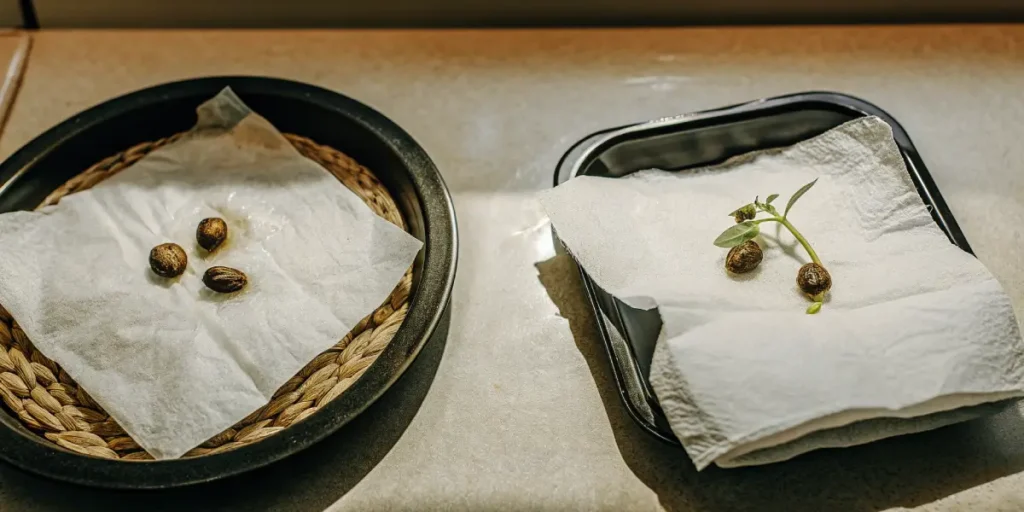
Harvesting & Drying Lemon Haze Auto the Right Way
Harvesting lemon haze auto at the right time ensures you enjoy the optimal flavor profile and potency of this stunning strain. Lemon haze auto typically enters the harvest window between 8 to 10 weeks after germination. It’s crucial to watch the trichomes closely; they should shift from clear to a milky white with a few starting to turn amber. Additionally, keep an eye on the pistils, which will darken and curl in when it’s time. A magnifying glass or a microscope can be an invaluable tool in ensuring precision. Harvesting at the right time is pivotal in maximizing both yield and quality.
Once you’ve determined your lemon haze auto is ready for harvest, the next step is to execute a clean and careful cut. Use sanitized scissors or pruning shears to cut the plants at their base. Handle the branches carefully to prevent trichome damage. It’s essential to trim away large fan leaves first, which allows for a less cluttered environment during the drying process. Whether you opt for dry or wet trimming, ensure it’s done in a manner that doesn’t stress the buds, preserving their delicate structures.
Drying your lemon haze auto correctly is critical for preserving flavor and preventing mold growth. Hang the trimmed branches upside down in a dark room with controlled humidity between 45-55% and a temperature range of 60-70°F. Ensure there’s adequate air circulation – a soft breeze is ideal, but avoid direct fan exposure to the buds. This drying process should take around 7-10 days. You’ll know they’re ready when the smaller stems snap rather than bend. Proper drying sets the foundation for a successful cure, enhancing both taste and aroma profiles.
Overall, patience and precision during harvesting and drying are key to achieving the best results from your lemon haze auto. By monitoring trichomes and environmental conditions, you can optimize the potency and flavor of this celebrated strain. This diligent attention to detail ensures a top-tier cannabis experience, maximizing both the quality and satisfaction derived from your homegrown lemon haze auto.
Lemon haze auto Strain Type: Indica, Sativa or Hybrid?
Lemon Haze Auto is a vibrant and enticing strain that falls under the hybrid category, leaning more towards the Sativa side. This strain is a result of crossbreeding between Lemon Skunk and Super Silver Haze, which are both acclaimed Sativa-dominant varieties. The outcome is a strain that captures the best of both worlds, offering the energetic and uplifting effects typical of Sativa, balanced with the relaxing properties inherent in Indica strains. This unique lineage gives Lemon Haze Auto its distinctive citrusy aroma and invigorating high, making it a favorite among many cannabis enthusiasts.
The Sativa-dominant nature of Lemon Haze Auto is evident in its growth pattern, effects, and flavor profile. Sativa strains are often associated with taller plants, longer flowering periods, and uplifting cerebral effects. Lemon Haze Auto mirrors these characteristics, despite its autoflowering genetics making it smaller and more manageable. When consuming this strain, users often report a clear-headed and euphoric high, a testament to its Sativa roots. This makes Lemon Haze Auto ideal for daytime use, as it can enhance creativity and sociability without the couch-lock effect associated with pure Indicas.
However, the Indica genetics present in Lemon Haze Auto shouldn’t be underestimated. While the strain predominantly exhibits Sativa characteristics, these Indica elements contribute to a well-rounded and comfortable high. The presence of Indica genetics helps temper the intensity of the Sativa effects, providing a subtle relaxation that complements its energizing nature. This balanced hybrid quality ensures that Lemon Haze Auto not only uplifts the spirit but also gently soothes the body, delivering a holistic experience that can be enjoyed by both novice and seasoned cannabis users alike.
Why Grow Lemon Haze Auto? Key Benefits for Cultivators
Growing Lemon Haze Auto offers numerous advantages to cultivators due to its auto-flowering nature and unique properties. As an auto-flowering cannabis variety, Lemon Haze Auto transitions automatically from the vegetative phase to the flowering phase based on the plant’s age rather than light cycles. This characteristic allows for a shorter total growing period, typically around 8-10 weeks from germination to harvest, making it ideal for growers looking to maximize yield and minimize time. The reduced growth time, coupled with its robust genetic profile, makes it a convenient and efficient choice for both novice and experienced growers alike.
Lemon Haze Auto is also appreciated for its hardiness and resilience. It inherits these traits from its parent strains, which makes it resistant to common pests and diseases, thus reducing the need for frequent intervention and chemical use. This natural resistance lowers maintenance efforts and costs, allowing for a more organic growing process while ensuring a healthy production volume. Its capability to thrive in various environments, whether indoors, outdoors, or in greenhouses, offers flexibility and versatility for different growers and geographic locations.
Besides to its growth benefits, Lemon Haze Auto is widely loved for its distinctive aromatic and flavor profile. It features a sweet yet tangy lemon scent with an uplifting and energizing high, making it a favorite among recreational users. This popularity ensures that Lemon Haze Auto maintains high market demand, which translates into better profitability for commercial cultivators. Furthermore, the strain’s auto-flowering nature usually results in smaller, more manageable plants, making them suitable for cultivators with space constraints. This versatility, alongside its market appeal, highlights the practical and economic benefits of growing Lemon Haze Auto.
Overall, Lemon Haze Auto stands out for its fast, resilient growth and its well-regarded sensory qualities. The ability to deliver high-quality yield under various conditions, coupled with reduced maintenance requirements, ensures that this strain continues to be a favored option among cannabis cultivators. Its popularity and adaptability make it an advantageous choice for those seeking to balance quality, efficiency, and profitability in their cannabis-growing endeavors.
Potential Challenges When Growing Lemon Haze Auto
Lemon Haze Auto, an auto-flowering strain revered for its citrusy aroma and potent effects, can present growers with unique challenges despite its generally forgiving nature. One primary challenge growers may face is managing temperature and humidity levels. Lemon Haze Auto thrives in a controlled environment where temperatures are stable – fluctuating between 70-85°F (21-29°C) during the plant’s light cycle. Excessively high temperatures can stress the plant, leading to reduced yields and potency, while too low temperatures can stunt growth.
Furthermore, humidity control is crucial during the various stages of growth. During the vegetative phase, a relative humidity level of around 60% is ideal. However, as the plant enters flowering, it’s essential to reduce humidity to approximately 40-50% to prevent mold and mildew, particularly in denser buds. Constant monitoring and adjustment of these environmental factors are necessary to ensure healthy plant development.
Another challenge that growers may encounter with Lemon Haze Auto is its sensitivity to nutrient levels. As an auto-flowering strain, it tends to have a shorter lifecycle compared to its photoperiod counterparts, meaning it requires a different approach to feeding. Overfeeding can lead to nutrient burn, characterized by yellow or browning leaves and a stunted plant. It’s essential to be cautious, starting with lower nutrient doses and gradually increasing as necessary based on the plant’s response.
Pests, such as spider mites and aphids, can also pose a threat to Lemon Haze Auto. Due to its quick-growing nature, there’s a smaller window to address pest issues without affecting yields. Regular inspections and preventive measures, including the use of organic pest control solutions and maintaining a clean growing environment, are vital for minimizing risk. Early detection and response are critical to protecting your crop from infestations.
Lastly, some growers might find it challenging to optimize light schedules for maximum yield with Lemon Haze Auto, given its auto-flowering nature that doesn’t rely on light cycle changes to flower. While it can flower under almost any light schedule, giving your plants around 18-24 hours of light daily can maximize growth and yield. Balancing energy costs with optimal light exposure is a challenge that requires careful planning and consideration to achieve a productive grow.
Is Lemon Haze Auto Worth Buying? Here’s What You Need to Know
Lemon Haze Auto is a popular choice among cannabis enthusiasts, known for its vibrant citrus aroma and uplifting effects. One of the primary reasons cultivators are drawn to this strain is its autoflowering feature, which simplifies the growing process by removing the necessity for a strict light schedule. This makes it particularly appealing to beginners or those with limited time to devote to cultivation. Despite its ease of growth, it’s important to consider whether Lemon Haze Auto aligns with your personal preferences and growing goals.
The distinct lemon scent of Lemon Haze Auto is refreshing and indicative of its high limonene content, a terpene known for its mood-enhancing properties. This strain often results in an energetic and euphoric experience, making it an ideal daytime choice for those seeking creativity or a boost of motivation. However, if you’re primarily in search of a strain for relaxation or sleep, Lemon Haze Auto might not be the best option given its stimulating effects. Understanding the intended use can be pivotal in deciding whether this strain fulfills your needs.
Growing Lemon Haze Auto is generally considered straightforward due to its robust structure and resilience against common pests and diseases. These plants typically reach a modest height, making them suitable for discreet outdoor growth or indoor setups with space limitations. Harvest time is also shorter compared to photoperiod strains, usually taking around 8-10 weeks from seed to harvest. However, potential growers should be aware that yield per plant might be lower than larger, photoperiod strains, which could be a deciding factor for those prioritizing quantity.
Lemon Haze Auto is worth considering if you value ease of growth, aroma, and uplifting effects. It is particularly suitable for growers with limited experience or those appreciating a quick turnaround. Nevertheless, if maximizing yield or seeking sedative effects is your priority, exploring other options might be beneficial. Evaluating your personal preferences and circumstances will guide you in determining if Lemon Haze Auto is the right choice for your garden.
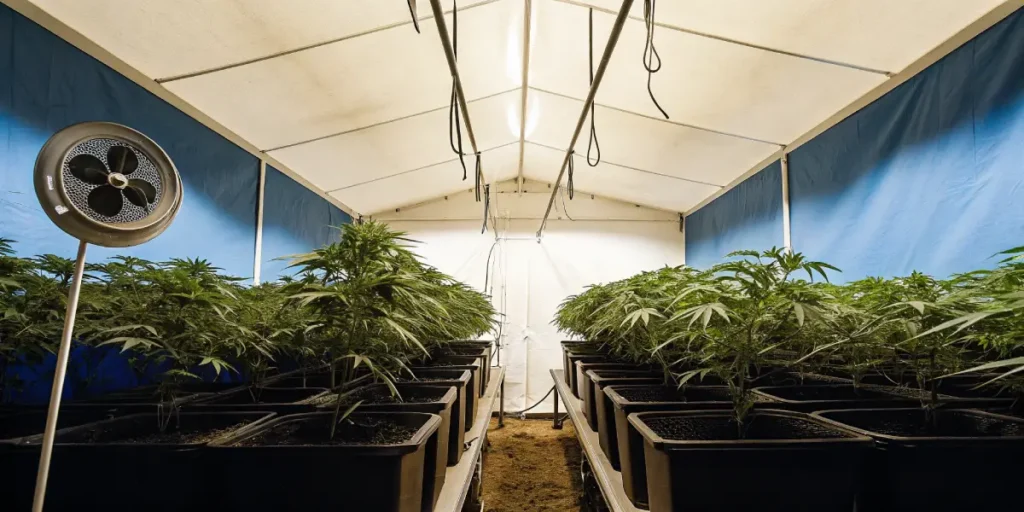
FAQs about Lemon Haze Auto
What is Lemon Haze Auto?
Lemon Haze Auto is an auto-flowering cannabis strain that combines the zesty flavors and potent effects of Super Lemon Haze with the ease of growth associated with auto-flowering genetics. This strain is popular for its citrusy aroma, uplifting effects, and rapid growth cycle. As an auto-flowering variety, it automatically transitions from the vegetative stage to the flowering stage, making it ideal for beginners and those seeking a quick harvest.
How long does it take for Lemon Haze Auto to grow?
Lemon Haze Auto typically has a growth cycle of around 9 to 10 weeks from seed to harvest. This is considerably shorter than photoperiod strains, which can take several months to mature. The auto-flowering trait allows growers to achieve quick turnarounds and multiple harvests in a single growing season, making it a convenient option for both indoor and outdoor cultivation.
What are the effects of Lemon Haze Auto?
Lemon Haze Auto is renowned for its uplifting and energetic effects, making it a popular choice for daytime use. The high is characterized by a euphoric, cerebral experience that can enhance creativity and social interactions while also providing a mild body relaxation. It is a great strain for those looking to combat stress, fatigue, and mild depression without heavy sedation, making it suitable for those who need to maintain focus and productivity.
What are the ideal growing conditions for Lemon Haze Auto?
Lemon Haze Auto thrives in both indoor and outdoor environments. It prefers a warm, sunny climate similar to that which is found in Mediterranean regions. When grown indoors, maintaining optimal temperature and humidity levels is crucial for best results. The use of quality soil, proper lighting, and consistent feeding schedules will ensure vigorous growth. Due to its auto-flowering nature, it requires minimal attention to light schedules, making it a convenient choice for various growing setups.
What are the typical yields of Lemon Haze Auto plants?
Lemon Haze Auto offers moderate yields compared to some larger photo-period strains, but it makes up for it with its ease of growth and quick turnaround. Indoors, growers can expect yields of approximately 250-400 grams per square meter, while outdoor plants may yield around 100-200 grams per plant. Factors such as growing conditions, experience, and care can significantly impact the overall yield.

